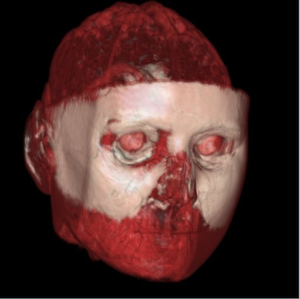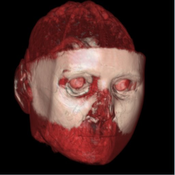Information
- Publication Type: Master Thesis
- Workgroup(s)/Project(s):
- Date: May 2004
- TU Wien Library:
- Note: 1
- First Supervisor: Eduard Gröller
Abstract
It is well known in the signal-processing community that the Body-Centered Cubic grid is the optimal sampling grid in 3D. In volume visualization, the Cartesian grid is by far the most popular type of grid because it is convenient to handle. But it requires 29.3% more samples than the Body-Centered Cubic grid. In order to convince people used to Cartesian grids for years of the advantages of Body-Centered Cubic grids, we must prove their usability in many different volume rendering algorithms. Further we have to show that we get a performance gain without or with only slight loss of image quality compared to Cartesian grids. Therefore we introduce several practical reconstruction schemes on Body-Centered Cubic grids, which are very general and can be used in a number of applications and tasks. Together with the development of powerful and flexible consumer graphics hardware, interactive hardware-accelerated volume rendering algorithms gain popularity. Rendering performance becomes a big issue, which can be a strong argument in favour of Body-Centered Cubic grids. We adapted some of the most popular volume rendering approaches exploiting hardwareacceleration to Body-Centered Cubic grids: both 2D and 3D texture-based volume rendering and the projected tetrahedra algorithm. At least partly we succeeded in achieving a performance gain on our new grid and further produced some impressive rendering results comparable to the Cartesian grid version.Additional Files and Images
Weblinks
No further information available.BibTeX
@mastersthesis{matt-masterthesis,
title = "Practical Reconstruction Schemes and Hardware-Accelerated
Direct Volume Rendering on Body-Centered Cubic Grids",
author = "Oliver Mattausch",
year = "2004",
abstract = "It is well known in the signal-processing community that the
Body-Centered Cubic grid is the optimal sampling grid in 3D.
In volume visualization, the Cartesian grid is by far the
most popular type of grid because it is convenient to
handle. But it requires 29.3% more samples than the
Body-Centered Cubic grid. In order to convince people used
to Cartesian grids for years of the advantages of
Body-Centered Cubic grids, we must prove their usability in
many different volume rendering algorithms. Further we have
to show that we get a performance gain without or with only
slight loss of image quality compared to Cartesian grids.
Therefore we introduce several practical reconstruction
schemes on Body-Centered Cubic grids, which are very general
and can be used in a number of applications and tasks.
Together with the development of powerful and flexible
consumer graphics hardware, interactive hardware-accelerated
volume rendering algorithms gain popularity. Rendering
performance becomes a big issue, which can be a strong
argument in favour of Body-Centered Cubic grids. We adapted
some of the most popular volume rendering approaches
exploiting hardwareacceleration to Body-Centered Cubic
grids: both 2D and 3D texture-based volume rendering and the
projected tetrahedra algorithm. At least partly we succeeded
in achieving a performance gain on our new grid and further
produced some impressive rendering results comparable to the
Cartesian grid version.",
month = may,
note = "1",
address = "Favoritenstrasse 9-11/E193-02, A-1040 Vienna, Austria",
school = "Institute of Computer Graphics and Algorithms, Vienna
University of Technology ",
URL = "https://www.cg.tuwien.ac.at/research/publications/2004/matt-masterthesis/",
}

 Thesis
Thesis

